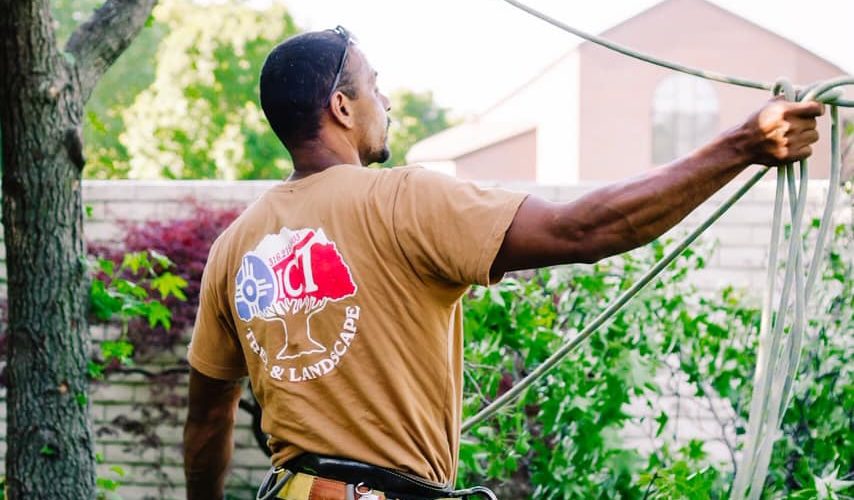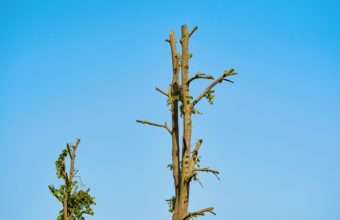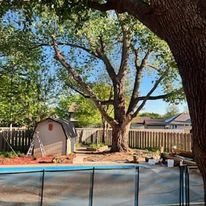Arborists use a combination of visual assessment, knowledge of tree biology, and diagnostic tools to determine the health of a tree.
Here are the key steps an arborist typically takes to evaluate the health of a tree…
- Visual Inspection – The arborist starts by visually inspecting the tree from top to bottom. They look for signs of damage, stress, disease, or pests. They examine the tree’s overall structure, including its branches, trunk, and roots, to check for any abnormalities or issues.
- Foliage Assessment – The condition of the tree’s leaves or needles is a crucial indicator of its health. The arborist looks for signs of discoloration, wilting, yellowing, or abnormal leaf drop. They assess the density of foliage to determine if the tree is producing an adequate amount of leaves for its species and age.
- Bark Inspection – The arborist checks the bark for any wounds, cracks, or signs of disease or infestation. Bark abnormalities can provide important clues about the tree’s health.
- Root Assessment – While roots are mostly underground and not directly visible, arborists may use tools like soil probes or air spades to examine the root system. They assess root health, depth, and distribution to determine if the tree is getting sufficient water and nutrients.
- Soil Examination – Soil quality is for tree health. Arborists may collect soil samples for analysis to assess factors like pH, nutrient levels, and compaction. Soil tests can help identify any deficiencies or imbalances that may be affecting the tree’s health.
- Pest and Disease Identification – Arborists are trained to recognize common tree pests and diseases. They look for symptoms like insect damage, fungal growth, or unusual patterns on the leaves and branches. If necessary, they may collect samples for laboratory analysis to confirm the presence of specific pathogens.
- Environmental Factors – Arborists consider environmental factors that may be impacting the tree, such as excessive moisture, drought, soil compaction, or pollution. They also assess the tree’s exposure to wind, sunlight, and nearby construction activities.
- Diagnostic Tools – In some cases, arborists may use specialized diagnostic tools, such as a resistograph (for measuring wood density) or a sonic tomograph (for assessing internal tree decay) to gather more precise information.
- Historical Information – Arborists may ask questions about the tree’s history, including past pruning, maintenance, and any recent changes in the tree’s surroundings.
After conducting a thorough assessment, the arborist can provide a diagnosis and recommendations for tree care, which may include pruning, fertilization, pest or disease management, or even tree removal if the tree is beyond recovery. Regular tree health assessments by certified arborists are for maintaining the vitality and longevity of trees in urban and natural environments.






